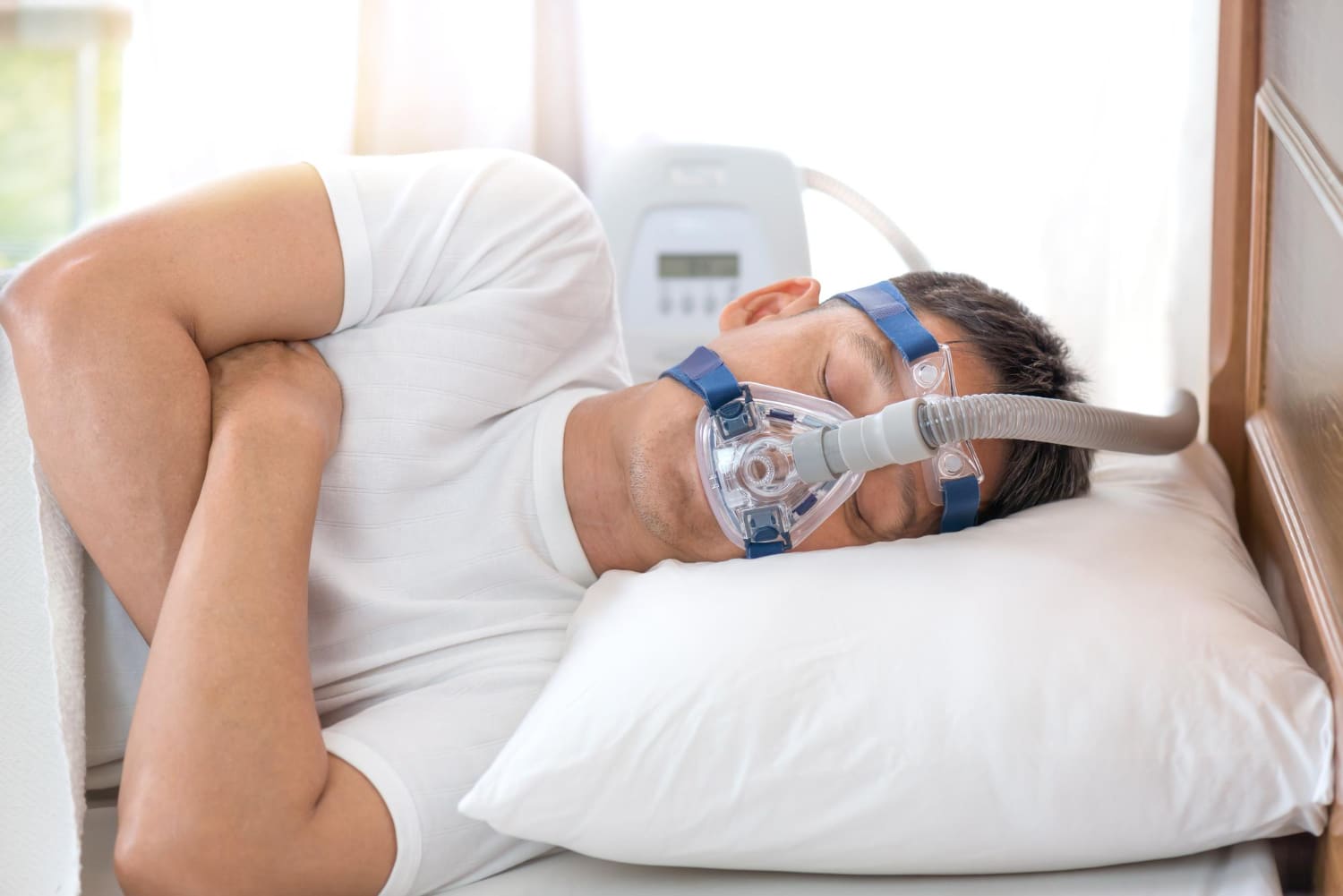Are you tired of feeling exhausted and groggy every morning despite a full night’s sleep? If so, you may be suffering from sleep apnea, a common sleep disorder that affects millions of people around the world. In this article, we will explore the surgical solutions and diagnostic steps available to treat sleep apnea and help you achieve a good night’s sleep.
Sleep apnea is a condition characterized by interrupted breathing during sleep, leading to poor quality sleep and daytime drowsiness. It can have a significant impact on both your physical and mental health if left untreated. Fortunately, there are several surgical options available, such as uvulopalatopharyngoplasty (UPPP) and maxillomandibular advancement (MMA), which can effectively treat sleep apnea and improve your sleep quality.
Diagnostic steps are crucial in determining the severity of sleep apnea and the appropriate treatment plan. These can include overnight sleep studies, consultation with a sleep specialist, and the use of monitoring devices.
By exploring the surgical solutions and diagnostic steps mentioned in this article, you will gain valuable insights into managing sleep apnea and enjoying a good night’s sleep once again. Don’t let sleep apnea hold you back – take control of your sleep health today!
Understanding Sleep Apnea
Sleep apnea is a prevalent sleep disorder characterized by pauses in breathing or shallow breaths during sleep. These interruptions in breathing can last from a few seconds to minutes and may occur multiple times per hour, disrupting the normal sleep cycle. There are three main types of sleep apnea: obstructive sleep apnea, central sleep apnea, and complex sleep apnea syndrome. Obstructive sleep apnea is the most common type, usually caused by the relaxation of the throat muscles, leading to a blockage of the airway.
Individuals with sleep apnea often experience symptoms such as loud snoring, daytime fatigue, morning headaches, irritability, and difficulty concentrating. The repeated interruptions in breathing can lower the blood oxygen levels, putting a strain on the heart and increasing the risk of cardiovascular problems. Sleep apnea can significantly impact a person’s quality of life, affecting their productivity, mood, and overall well-being.
Sleep apnea is a serious condition that requires proper diagnosis and treatment to prevent complications and improve sleep quality. If left untreated, it can contribute to the development of hypertension, heart disease, stroke, and other health issues. Seeking medical advice and undergoing diagnostic tests are crucial steps in managing sleep apnea and regaining restful sleep.
The Importance of Diagnosing and Treating Sleep Apnea
Diagnosing sleep apnea involves a comprehensive evaluation of the individual’s symptoms, medical history, and physical examination. To confirm the diagnosis and determine the severity of the condition, healthcare providers may recommend undergoing an overnight sleep study, also known as a polysomnography. During the sleep study, various parameters such as breathing patterns, oxygen levels, heart rate, and brain activity are monitored to assess the presence and frequency of apnea episodes.
Effective treatment of sleep apnea not only alleviates symptoms but also reduces the risk of associated health complications. Continuous Positive Airway Pressure (CPAP) therapy is a common non-surgical treatment for sleep apnea, involving the use of a machine that delivers a steady stream of air pressure through a mask worn over the nose or mouth during sleep. CPAP helps keep the airway open, preventing breathing pauses and improving oxygen levels, leading to better sleep quality and daytime alertness.
In cases where CPAP therapy is not suitable or effective, surgical interventions may be recommended to address the underlying causes of sleep apnea. Surgical options such as uvulopalatopharyngoplasty (UPPP) and maxillomandibular advancement (MMA) aim to widen the airway by removing or repositioning tissues that obstruct breathing during sleep. These procedures can significantly improve airflow and reduce the frequency of apnea episodes, resulting in better sleep patterns and overall health.

Diagnostic Steps for Sleep Apnea
To determine the most appropriate treatment approach for sleep apnea, healthcare providers may recommend a combination of diagnostic steps tailored to the individual’s needs. Consultation with a sleep specialist is essential in assessing the severity of the condition and developing a personalized treatment plan. The sleep specialist may review the results of the sleep study, discuss symptoms and risk factors, and provide guidance on lifestyle modifications to improve sleep quality.
In addition to overnight sleep studies, portable monitoring devices known as home sleep apnea tests (HSATs) may be used to diagnose sleep apnea in certain cases. These devices are convenient and comfortable to use at home, allowing individuals to monitor their sleep patterns and collect data on breathing, oxygen levels, and heart rate. HSATs provide valuable information that can aid healthcare providers in diagnosing sleep apnea and tailoring treatment recommendations accordingly.
For individuals who suspect they may have sleep apnea or are experiencing symptoms such as snoring, daytime fatigue, or gasping for breath during sleep, seeking professional evaluation is essential. Early diagnosis and intervention can help prevent the progression of sleep apnea and its associated health risks, allowing individuals to regain restful sleep and improve their overall quality of life.
Surgical Solutions for Sleep Apnea
When conservative treatments such as CPAP therapy or oral appliances are ineffective in managing sleep apnea, surgical interventions may be considered to address anatomical issues contributing to airway obstruction. Uvulopalatopharyngoplasty (UPPP) is a common surgical procedure performed to remove excess tissue in the throat, including the uvula, soft palate, and tonsils, to widen the airway and reduce the risk of blockage during sleep.
Maxillomandibular advancement (MMA) is another surgical option that involves repositioning the upper and lower jaws to expand the space behind the tongue and soft palate, reducing the likelihood of airway collapse during sleep. This procedure aims to improve airflow and eliminate breathing obstructions, leading to significant improvements in sleep quality and overall health. Prior to undergoing surgery, individuals will undergo a thorough evaluation to assess their candidacy for the procedure and discuss potential risks and benefits.
Surgical solutions for sleep apnea are typically recommended for individuals with moderate to severe obstructive sleep apnea who have not responded to conservative treatments. While surgery can be effective in improving symptoms and reducing the frequency of apnea episodes, it is essential to weigh the potential benefits against the risks and consider alternative treatment options before proceeding with a surgical intervention.
Continuous Positive Airway Pressure (CPAP) Therapy
Continuous Positive Airway Pressure (CPAP) therapy is a widely used treatment for sleep apnea that involves wearing a mask connected to a machine that delivers pressurized air to keep the airway open during sleep. The continuous airflow prevents the collapse of the airway, allowing for uninterrupted breathing and improved oxygen levels throughout the night. CPAP therapy is highly effective in reducing the symptoms of sleep apnea, such as snoring, daytime fatigue, and morning headaches, leading to better quality sleep and increased daytime alertness.
Adherence to CPAP therapy is crucial for its effectiveness in managing sleep apnea and improving overall sleep quality. While some individuals may find wearing a CPAP mask uncomfortable or inconvenient initially, the benefits of consistent CPAP use far outweigh any temporary discomfort. Regular follow-up appointments with healthcare providers are recommended to monitor progress, adjust settings if necessary, and address any issues or concerns related to CPAP therapy. With proper education and support, individuals can successfully incorporate CPAP therapy into their nightly routine and experience the long-term benefits of improved sleep and well-being.

Lifestyle Changes for Managing Sleep Apnea
In addition to medical treatments such as CPAP therapy and surgical interventions, making lifestyle modifications can play a significant role in managing sleep apnea and improving sleep quality. Maintaining a healthy weight through regular exercise and a balanced diet can reduce the risk of excess fat deposits around the neck and throat, which can contribute to airway obstruction during sleep. Weight loss can lead to improvements in breathing patterns, reducing the severity of sleep apnea symptoms and enhancing overall sleep quality.
Avoiding alcohol, sedatives, and tobacco products can also benefit individuals with sleep apnea, as these substances can relax the throat muscles and worsen breathing problems during sleep. Establishing a consistent sleep schedule, creating a relaxing bedtime routine, and optimizing the sleep environment by keeping the bedroom dark, quiet, and cool can promote restful sleep and minimize disruptions during the night. Practicing good sleep hygiene habits and addressing any underlying sleep disorders can help individuals with sleep apnea achieve better sleep outcomes and enhance their overall quality of life.
Alternative Treatments for Sleep Apnea
In addition to traditional treatments like CPAP therapy and surgical solutions, several alternative therapies and complementary approaches can be considered in the management of sleep apnea. Oral appliances, also known as mandibular advancement devices, are custom-made mouthpieces that help reposition the jaw and tongue to keep the airway open during sleep. These devices are particularly useful for individuals with mild to moderate obstructive sleep apnea who prefer a non-invasive treatment option.
Acupuncture, a form of traditional Chinese medicine that involves the insertion of thin needles into specific points on the body, has been suggested as a potential complementary therapy for sleep apnea. While more research is needed to establish the effectiveness of acupuncture in managing sleep apnea, some individuals may find relief from symptoms such as snoring and daytime fatigue through regular acupuncture sessions. Other alternative treatments such as positional therapy, which involves changing sleeping positions to prevent airway collapse, and nasal dilator strips, which help keep the nasal passages open, can also be explored as adjunct therapies for sleep apnea management.
Before considering alternative treatments for sleep apnea, it is important to consult with healthcare providers and sleep specialists to ensure that these approaches are safe and appropriate for individual needs. Integrating alternative therapies with evidence-based treatments can enhance the overall management of sleep apnea and improve sleep outcomes. By exploring a combination of traditional and alternative approaches, individuals with sleep apnea can tailor their treatment plan to suit their preferences and achieve optimal results in sleep quality and overall well-being.
Sleep Apnea Resources and Support Groups
Living with sleep apnea can present challenges and uncertainties, but numerous resources and support groups are available to provide information, guidance, and encouragement to individuals coping with this condition. National sleep organizations, such as the American Academy of Sleep Medicine and the National Sleep Foundation, offer valuable passages open, can also be explored as adjunct therapies for sleep apnea management.
Before considering alternative treatments for sleep apnea, it is important to consult with healthcare providers and sleep specialists to ensure that these approaches are safe and appropriate for individual needs. Integrating alternative therapies with evidence-based treatments can enhance the overall management of sleep apnea and improve sleep outcomes. By exploring a combination of traditional and alternative approaches, individuals with sleep apnea can tailor their treatment plan to suit their preferences and achieve optimal results in sleep quality and overall well-being.

Conclusion: Taking Control of Your Sleep Health
In conclusion, sleep apnea is a common sleep disorder that can have a significant impact on an individual’s quality of life if left untreated. Understanding the symptoms and effects of sleep apnea, as well as the importance of proper diagnosis and treatment, is essential in managing the condition effectively. By undergoing diagnostic steps such as overnight sleep studies and consulting with sleep specialists, individuals can receive accurate assessments of their sleep apnea severity and develop personalized treatment plans tailored to their needs.
Surgical solutions such as uvulopalatopharyngoplasty (UPPP) and maxillomandibular advancement (MMA) can be effective in addressing anatomical issues contributing to airway obstruction and improving sleep quality. Continuous Positive Airway Pressure (CPAP) therapy remains a cornerstone treatment for sleep apnea, offering significant benefits in preventing breathing interruptions and enhancing daytime alertness. Lifestyle changes, alternative therapies, and support resources can further complement traditional treatments and provide individuals with a holistic approach to managing sleep apnea and achieving restful sleep.
Taking control of your sleep health starts with recognizing the signs of sleep apnea, seeking professional evaluation, and exploring treatment options that best suit your needs and preferences. By prioritizing your sleep quality, making informed decisions about your care, and accessing available support services, you can navigate the challenges of sleep apnea with confidence and improve your overall well-being. Don’t let sleep apnea hinder your sleep and impact your health – take proactive steps today to reclaim restful nights and wake up refreshed and rejuvenated every morning.






